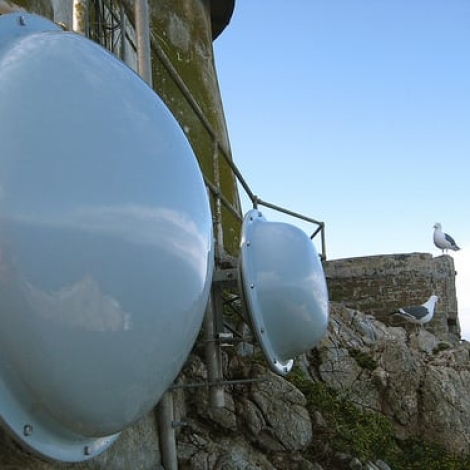In 2005, ophthalmologists in the southern Indian state of Tamil Nadu began field testing a new long-distance Wi-Fi network to interview and diagnose their rural patients. The five hospitals in the Aravind Eye Care System are digitally linked to a growing network of tiny vision centers—many just a single room staffed with a counselor and a technician—that serve the region’s hard-to-reach towns. Before remote diagnosis was possible, many rural Indians with easily-corrected conditions, such as cataracts or refractive errors, lost their sight and went untreated. Now, Aravind’s doctors have remotely diagnosed 100,000 patients and restored sight to 30,000 as a direct result of the new technology.
Researchers at the University of California, Berkeley, developed the long-distance Wi-Fi network to send huge amounts of data across unprecedented long distances between the hospitals. Traditionally, satellites or wireless technology such as WiMax create rural links. But those are costly, both upfront and in maintenance and carrier fees, making them impractical in many developing countries. Instead, the Berkeley team wrote software to hack off-the-shelf radios, computers and antennae and hugely extend the range of Wi-Fi signals.
Now, the next generation of the technology is underway, with point to multi-point communications and integrated charge controllers for solar power. Former members of the Berkeley team have founded the De Novo Group, an Oakland, Calif.-based non-profit that adapts research solutions like long-distance Wi-Fi to communities that need it. De Novo has set up Wi-Fi links in schools, hospitals and communities in Africa, India and Southeast Asia. De Novo works with aid organizations and others, and keeps its designs open source. We spoke with the folks at De Novo to find out how this technology could serve other rural communities and maybe your own projects. Here’s some background.
How it works
“We use Wi-Fi because it’s cheap,” UC Berkeley Professor Eric Brewer, who heads the Wi-Fi research, explains in the video embedded below. “But it’s not made to go long distances. So, the trick is, how do you make something made for short distance go a long distance? And the answer is a combination of special antennas and special software. Put together, we can get quite high bandwidth, typically 18-20 megabits per second—far more than you actually need for normal transmission—over arbitrary distances limited by how far you can see. Which, actually, is a good thing for radio stations because they tend to see a long way.”
Prof Eric Brewer Wildnet Long Distance Wifi from Jonathan Marks on Vimeo.
How it’s made
WiLDNet, as the technology is called—uses a power-efficient single-board computer (similar to those found in slot machines) with a Linux operating system and up to three wireless cards for routers. The cards are Atheros’ off-the-shelf, high-power 802.11a/b/g with 400mW of transmit power. WiLDNet makes links between stations using high-gain parabolic directional antennas.
The hardware for a typical station costs less than $500. It consumes very little power—5-10W—and it’s light weight. There is no monthly service fee. And with a small solar panel, even the electricity can be mostly free and reliable.
The solution is not suited to urban areas where buildings and transmissions from other devices can interfere with the signal. But in rural areas where there is little to get in the way, long-distance Wi-Fi can connect people cheaply.
Where it works
One of those areas is in the Philippines, where De Novo helped set up the only Internet connection for two remote island communities. And in Uganda the group has linked refugee camps with a network that allows the refugees to phone family members back home.
In Venezuela the technology set the world record for the distance of a single hop between two stations. The signal transmitted from an antennae on a tower at 13,780 ft (4200 meters) above sea level in the Venezuelan Andes down to another on a coastal mountaintop outside of Caracas, 231 miles (373km) away. There’s a line of sight between the two towers.
The technology is also in use in remote areas of the developed world. Farallon National Wildlife Refuge, three groups of small islands 28 miles west of the Golden Gate Bridge off California’s coast, use long-distance Wi-Fi to transmit views from a remote camera to the mainland.
For more information, please see De Novo’s site and check the online resources below.
Resources
- WiLDNet overview
- WiLDNet brochure with specs and more details (pdf)
- Deploying a Rural Wireless Telemedicine System, IEEE Computer Society (pdf)
- Rethinking Wireless for the Developing World, research paper (pdf)


We would like to connect with the team who can help us with “Wildnet Long Distance Wifi”. Our state Uttarakhand in India is an hilly terrain and religious visiting terrain. We are looking for a communication solution in rural and hilly areas.
Would like to discuss with you over a videocon meeting if possible. Please do let us know if you need more information from our side.
Thanks & Regards
Anil Tadkod
SeMT(State eMission Team Head, Govt Of India
anil.t@semt.gov.in